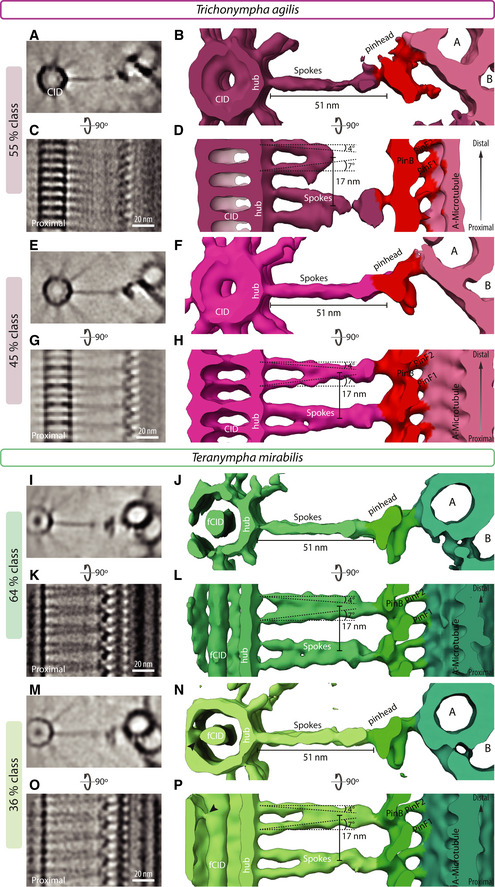Non‐symmetrized STA comprising larger sub‐volumes than in Fig
2,
3,
4 and centered on the spokes to jointly show the central cartwheel and peripheral elements in
T. agilis (A‐D: 55% class; E‐H: 45% class) and
T. mirabilis (I‐L: 64% class; M‐P: 36% class). 2D slices through STA transverse view (A, E, I, M) with corresponding 3D views (B, F, J, N), as well as 2D longitudinal views (C, G, K, O) with corresponding 3D views (D, H, L, P). The concerted proximal–distal polarity is visible from the central CID (in A‐H) and the hub all the way to the pinhead. Note that proximal–distal polarity is visible also in the asymmetric spoke tilt angles in all cases, with a more pronounced tilt on the proximal side (D, H, L, P). Note also that the unsymmetrized CID shown here resembles that in the symmetrized maps of Figure
2, indicating that the CID exhibits
bona fide 9‐fold radial symmetry (A, E). Arrowhead in (N, P) points to a connection between fCID and hub. For representation, a Gaussian filter was applied to maps in ChimeraX.

